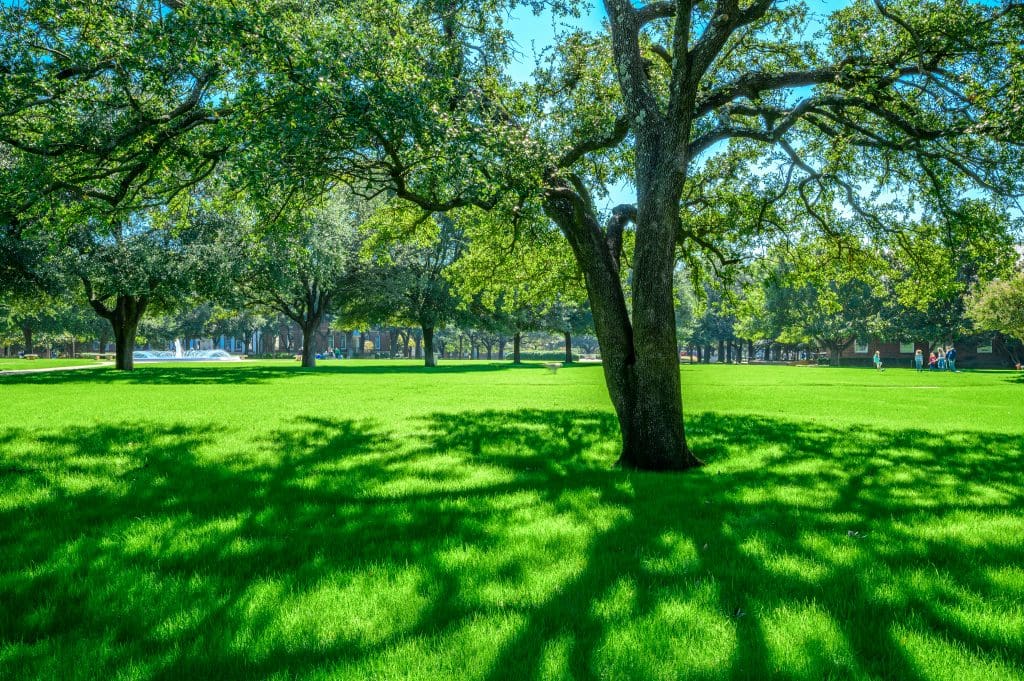
As we head into the dormant season, you may start getting phone calls from clients as this is can be a prime time for pruning trees.
Pruning is an important practice that removes dead and dying branches, allowing for new growth while protecting people below. While it may seem like a straightforward task, make sure you are not guilty of common mistakes in the industry and are following proper pruning practices.
Common Mistakes
Mark Chisholm, a professional arborist with Aspen Tree Expert Company based in Jackson, New Jersey, says one of the most detrimental pruning cuts are ones that damage the trunk. Landscape professionals should make cuts just outside the branch collar. This part of the tree will wall off the wound to protect the tree.
Chisholm says these mistakes are often perpetuated because tree anatomy is not common knowledge and many are pruning without being properly trained beforehand.
“I think professionals tend to overprune trees and are too quick to recommend trees be removed, rather than mitigating whatever risks might be there,” says Ron Rothhaas Jr., principal at Arbor Doctor, LLC based in Cincinnati, Ohio.
Rothhaas says when he was in school, he was taught to thin out trees, but since then research has proven this practice to be incorrect.
“There is new information continually being brought about by new research and that information is slow to make it out into the industry,” Rothhaas says. “Therefore, people tend to be using recommendations that are outdated.”
Chisholm says another common mistake is to make a cut from top to bottom on a branch, rather than a 3-part cut. He says the weight of the branch may cause the branch to tear down before the cut is finished, thus causing a rip in the trunk and creating a wound.
Best Pruning Practices

There are a number of best practices when it comes to pruning trees but simply knowing the proper place to make a pruning cut and not removing more than 15 percent of the leaf canopy at one time can help ensure a tree’s wellbeing.
“It is best to have a tree evaluated before making any substantial cuts,” Chisholm says. “Ten percent is usually a fine amount to remove at one time if the tree is vigorous and does not have any other afflictions. If we are in a drought and there is a known insect issue with the tree being pruned and then you remove a large part of the canopy, then the tree may succumb to the combined stress.”
Another best practice is the ability to identify what species of tree you’re working with as this can dictate the proper timing for pruning a tree. An example of this is how oak trees should not be pruned during the growing season because they are susceptible to oak wilt.
Timing when to prune trees is about finding a balance between faster wound closure in the spring and the visibility of the branches in the winter.
“There’s a lot of evidence that the best wound closure will occur in many trees if it’s done in the spring and that’s because in the spring you have rapid growth going, including the rapid formation of new tissue,” Rothhaas says. “Spring can be a very good time to prune.”
Chisholm says another best practice is having a purpose for pruning a tree.
“Without the goals being identified it will be hard to perform the best practices for the tree,” he says.
Educating Clients
When it comes to identifying a purpose for pruning a tree, there may be times you discover you need to educate the client.
“A primary function of what I do is the education of my clients so that they can understand not only what needs to be done, but why it needs to be done,” Rothhaas says.
Rothhaas says often clients will contact him when they think a tree has become too large or too close to the house and believe topping the tree or making it smaller with pruning will solve the problem. He will often offer alternatives to pruning, such as treating the tree with growth regulators to slow its growth so pruning is not needed as often.
He will conduct risk assessment qualifications when it comes to deciding if a tree needs to be removed. Rothhaas says this assessment goes beyond what the risk may be, but he also considers the benefits tree provides, how much the owner values the tree and the health of the tree.
“We’re weighing all those different factors,” Rothhaas says. “Because if a tree is highly valued, the person loves the shade, they love what the tree has done for the property, maybe it does have some structural issues and things like that. We try to work through that rather than removing the tree, we consider what can we do to mitigate the risk of a tree that has moderate or even high risk.”
Chisolm the most common issue is blending what the client wants and what the tree needs.
“Oftentimes people are unaware of the negative effects of removing large tree parts or too much foliage at one time,” Chisholm says. “They will ask to trim every branch off of a neighbor’s tree that overhangs their property and most times that is not good for the tree. We then develop a compromise that they can live with.”

